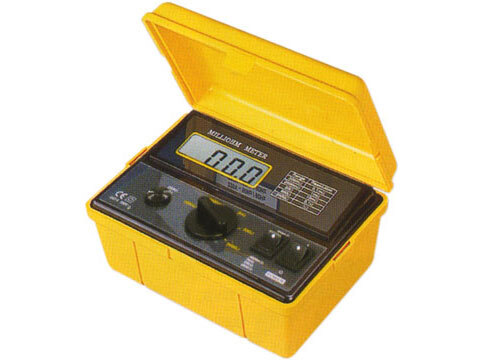Milliohm Meters Measures low resistance to detect faulty connections that degrade electrical system performance.Prevent electronic failures.
A milliohm meter (mili-ohm meter) and a micro-ohm meter are electrical instruments that are used to measure very low resistance values. These values are typically measured in milliohms (mΩ) and microohms (µΩ), respectively.
What is the Milliohm meter used for?
Milliohm meters are commonly used in the electrical industry for measuring the resistance of components in circuits, such as resistors, wires, and other electrical connections. They can also be used to measure the resistance of electrical motors and generators, as well as the resistance of batteries.
Micro-ohm meters, on the other hand, are typically used in the power industry to measure the resistance of high-power electrical connections, such as those found in power transformers and other large electrical equipment. They are also used to measure the resistance of ground connections and other low-resistance circuits.
Both milliohm meters and micro-ohm meters are useful for checking the resistance of surfaces, such as the resistance of a surface to electrical leakage. This can be important in the electrical industry, as high surface resistance can lead to electrical breakdown and other problems.
In summary, milliohm meters and micro-ohm meters are specialized electrical instruments that are used to measure very low resistance values. They are commonly used in the electrical and power industries to test and troubleshoot various electrical components and connections. Additionally, they can also be used to check the resistance of surfaces, which is important for maintaining the safety and reliability of electrical systems.
Milliohm Meters consists of:
bandwidth
sampling rate
maximum channels
operating temperature
display type
display digits

Principle of Operation
The miliohm meter applies a known current to the resistor under test and measures the voltage drop across it using four separate leads. By precisely controlling the current and isolating the voltage measurement from lead resistance, miliohm meters can accurately calculate the resistance of the test specimen.
Applications of Miliohm Meters
Miliohm meters find widespread use across various industries and disciplines, including:
Electrical Engineering: Testing of electrical connections, cable integrity, and bonding resistance.
Electronics Manufacturing: Quality control of PCB traces, solder joints, and component leads.
Automotive Industry: Diagnosis of electrical faults in vehicle wiring, connectors, and grounding systems.
Key Features to Consider
When selecting a miliohm meter, several key features should be taken into account:
Accuracy: Ensure the meter meets your precision requirements for the intended application.
Range: Choose a meter with a suitable measurement range to cover the resistance values you expect to encounter.
Display: A clear and easy-to-read display is essential, especially in low-light conditions.
Connectivity: Consider whether you need the ability to connect the meter to a computer or other devices for data logging and analysis.
Benefits of Using Miliohm Meters
The use of miliohm meters offers several advantages:
High Accuracy: Provides precise measurements even at extremely low resistances.
Repeatable Results: Ensures consistent and reliable readings for quality assurance.
Efficiency: Speeds up testing processes with fast measurement capabilities.
Versatility: Suitable for a wide range of applications across different industri